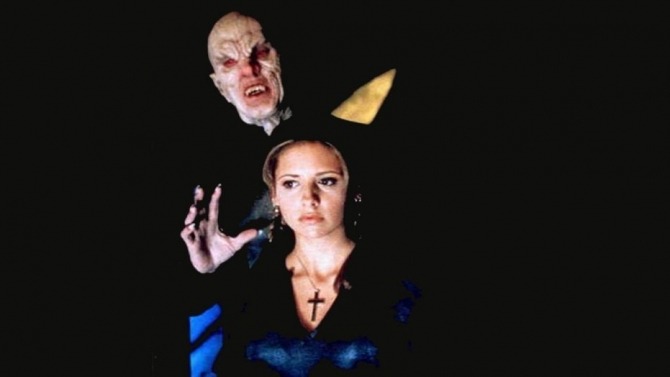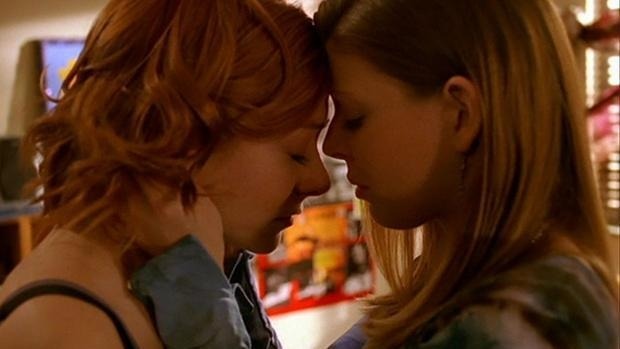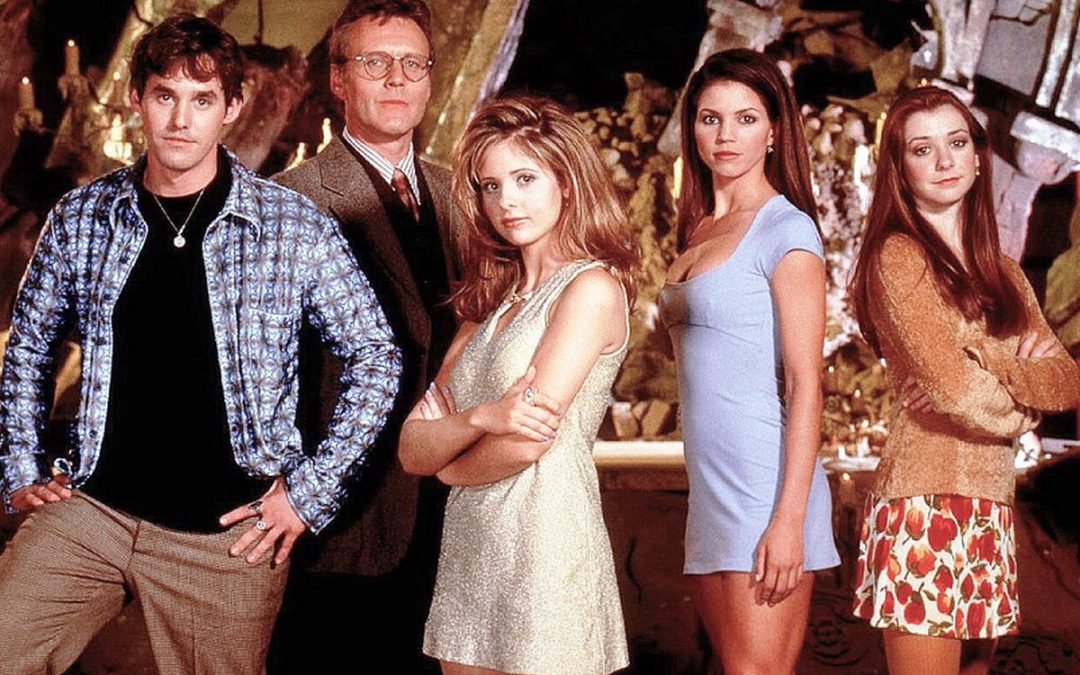A reboot of classic TV series Buffy The Vampire Slayer is in the works, with Joss Whedon returning as executive producer and Monica Owusu-Breen coming in as writer and showrunner. The intended series is to recast and reboot the original characters, with a black actress playing Buffy, previously played by white actresses Kristy Swanson and Sarah Michelle Gellar. And so Buffy fans around the world ask themselves – do we want a reboot?
There are some solid arguments in favour. First and foremost, the beloved television series Buffy The Vampire Slayer was itself a reboot of the 1992 film Buffy The Vampire Slayer. Technically, it could be regarded as a sequel – the events of the film were broadly implied to be part of the Buffy canon, with early references to a disaster in the school gym echoing events in the film, and Buffy arriving in her new home town of Sunnydale already a fully fledged Slayer. However, the series was entirely re-cast and the mythology tweaked a fair bit; anything from the movie that didn’t fit the show was simply dropped or ignored. So Buffy The Vampire Slayer has been rebooted before – it could be rebooted again.
However, it has to be admitted that the situation here is not really comparable to that of the 1990s. The 1992 movie had not been particularly successful, so it was easy enough to reboot the story for a new audience on television. The 1997-2003 TV series, on the other hand, is frequently cited as one of the best television series of all time. It provided Joss Whedon with the break that made him famous and beloved of geek audiences, it produced a successful spin-off (Angel: The Series) that ran for five seasons, the comic book continuation of the series is still going and it launched the careers of Sarah Michelle Gellar, David Boreanaz and Alyson Hannigan.
It’s one thing to reboot an obscure movie; it’s quite another to reboot one of the beloved TV series ever produced. Granted, it’s not impossible, but there’s a reason Star Trek waited 40 years to re-cast Captain Kirk. Buffy is 20 years old now, and it’s true that if you ask a room full of average 18-year-olds if they’ve seen it, the majority have not (I can report this from experience – 18-year-olds reading Den of Geek, I suspect, are a bit more likely to have seen it!). But 20 years is not 40 – Buffy is readily available on DVD, Blu-Ray, streaming etc., and hardly so hopelessly out of date that new viewers watching it now would be unable to connect with it (though they might be a bit put off by the pager, and wonder why no one ever just uses their mobile phone to call for help when under attack).

There is another advantage to a reboot, rather than a sequel. In the film and the first three seasons of the TV show, Buffy had a very specific set-up. A young girl would be mystically Chosen from among all the young girls on the planet to fight vampires, and the new/current Chosen One was an American high school (former) cheerleader. Without going into spoileriffic details, the conclusion to the TV series changed the world of Buffy in a fundamental way that would make a sequel repeating this set-up in the same way impossible (as well as statistically unlikely!). A reboot allows new writers to write new stories set in the world of Buffy as originally envisioned.
But that is also one of the reasons not to do a reboot. Buffy ran for seven seasons, three of them in that original high school setting, and it was brilliant. Why go backwards and tell more stories in the same settings, repeating all the beats the original series already hit? Has the world really changed that much in 20 years that there are that many new stories to tell in the same setting, with the same characters? (Hmm, maybe don’t answer that, you’ll make us feel old).
This brings us to a sore point for many fans – there are a lot of other ways new Buffy stories could be produced, covering new issues and taking us to new places, that many fans would prefer to a re-boot. The most obvious is, of course, a sequel – the Buffy The Vampire Slayer comic books have continued the story, and either these could be adapted or a new TV sequel series produced, over-writing the canon. If the original cast don’t want to come back or new characters are wanted, a sequel series could follow new characters with cameos from alumni of both Buffy and Angel, and the core cast could certainly be more diverse than the original.

One of the welcome things about the planned re-boot is the plan to introduce a more diverse cast; the original series included frequently recurring characters of colour only in seasons 3, 4, and 7, and never any regular characters of colour. However, many fans would prefer to see new characters created than beloved roles filled by new actors. It’s true that Buffy herself has been re-cast before, but in the years since then, many have come to feel that Gellar’s performance defines the character, and several other core cast members are played by equally memorable stars – it’s hard to imagine anyone other than Alyson Hannigan as Willow Rosenberg, for example (even though Hannigan did not, in fact, play Willow in the original unaired pilot, in which the character was played by Riff Regan).
Aside from a direct sequel, another way of telling new stories with new characters within the series mythology would be to produce a time-shifted series not set in the present. This could be a prequel series set in the past, which has the added advantage of maintaining the original set-up more closely than a direct sequel could (due to events in the series finale). Buffy’s mythology allows for plenty of options for a preview series based around a character of colour – canonical 1970s Slayer Nikki Wood springs to mind. Alternatively, a new series could be set further in the future, as spin-off comic book series Fray was.

With so many opportunities to see new characters deal with new stories in Buffy’s world, it can be hard to see what might be gained from returning to the same characters in the same format. And, to be fair, we know very little about this new series – it may be that Whedon and Owusu-Breen have a more different take in mind than has so far been implied. But perhaps we’re wrong. Perhaps the world really has changed that much in 20 years, and a new generation of Slayerettes deserve to discover a new take on Buffy that they make their own – one who spends more time on social media, has better access to help as long as she has mobile phone reception, and perhaps wears fewer mini-dresses and more skinny jeans. Because ultimately, maybe, a reboot of Buffy: The High School Years isn’t for us ageing fans, but for them.

